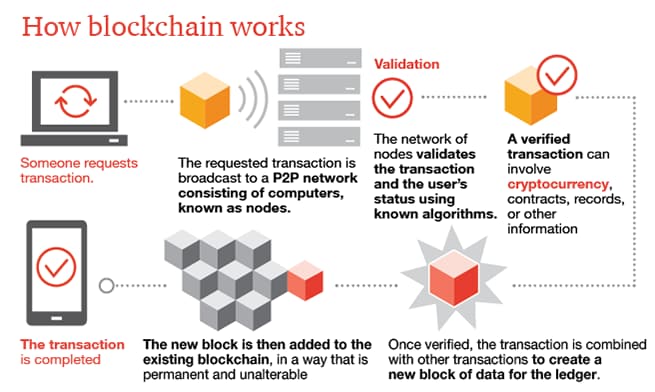In a small stock dividend, retained earnings is debited for the fair value of the shares issued, the common stock account is credited for the par value of the newly issued shares, and additional paid-in capital is credited for the difference. The effect of this is to transfer an equal amount of money from retained earnings to contributed capital.
In a small stock dividend, the amount of retained earnings that is converted to contributed capital is the fair value of the shares, not the par value of the shares. If the stock dividend is a large stock dividend (more than 25% of the outstanding shares issued as the stock dividend), then the journal entry is based on the par value of the shares.
example The following information is available for Paragon as of November 30.
The market price of Paragon's common stock was $4 per share on November 30.
Common stock - $1 par value; 20,000,000 shares issued and outstanding - $20,000,000
Paid-in capital in excess of par value - $12,200,000
Retained earnings - $16,000,000
If Paragon had declared a 10% stock dividend on November 30, retained earnings would have been:
answer . Reduced by $8,000,000.
A 10% stock dividend is a small stock dividend (a small stock dividend is less than or equal to 25% of the shares outstanding). In a small stock dividend, retained earnings is reduced by the fair value of the shares
that will be issued, using the value on the date of declaration to value the shares. In a 10% dividend, Paragon would have issued 2,000,000 shares. At the date of declaration the shares had a market value of $4, so the
retained earnings of Paragon would have decreased by $8,000,000 as a result of this stock dividend
In a stock split the par value of the shares is reduced. The total capital from the shares remains the same, but that capital needs to be split among more shares because of the stock split.
Under a stock dividend there is no effect on the par value of the shares. A stock dividend should not affect the value of the company. The distribution of a stock dividend does not increase or decrease equity and will not generate a profit or cause a loss.
The balance sheet (or statement of financial position) helps users to assess the liquidity, financial flexibil ity, solvency and risk of a company. A company with financial flexibility has the ability to respond to unexpected needs and opportunities
Financial flexibility refers to the ability of a company to take actions that will alter the amounts and timing of its cash flows so that it is able to respond to unexpected needs and opportunities. For example, a company with a lot of debt is not financially flexible, because its available cash is committed to servicing its debt and it may have loan covenants that it must comply with. It will not have much spare cash to finance an expansion or to meet an unexpected need, nor will it have the ability to borrow much more. A firm with a high degree of financial flexibility can better survive an economic downturn or other difficult setback, and it is in a better position to take advantage of profitable and unexpected investment opportunities. Moreover, a company with greater financial flexibility has a lower risk of failure
Investing activities are those activities that the company undertakes to generate a future profit, or return, such as purchasing and selling fixed assets, purchasing and selling stock of other companies, purchasing and
selling debt instruments, and purchasing and selling available-for-sale or held-to-maturity securities.
Therefore, the sale of available-for-sale securities should be classified on the statement of cash flows as an investing activity. According to the FASB Codification, Paragraph 230-10-45-11, "Cash flows from purchases,
sales, and maturities of available-for-sale securities shall be classified as cash flows from investing activities and reported gross in the statement of cash flows.
The sale of available-for-sale securities is not classified on the statement of cash flows as an operating activity.
The sale of trading securities is usually classified as an operating activity on the statement of cash flows. However, some securities are classified as trading securities even though they are not being held for sale in the near term. Cash
receipts and cash payments related to trading securities reported at fair value should be classified based on the nature and purpose of the securities. Therefore, the facts and circumstances of the situation need to be evaluated to
determine whether cash flows from trading securities are to be classified as operating activities or as investing activities
While the profit on inventory that is sold between companies that will be consolidated needs to be eliminated, the profit that is made on inventory sold to unaffiliated companies should not be eliminated in the
consolidation process.
A decline in the value of an available-for-sale security below cost that is deemed to be other than temporary should be treated as a realized loss and included in the determination of net income for the period.
When the decline in the market value of an available-for-sale security is considered to be permanent, the loss should be recognized in full in the period in which it occurred.
Increases or decreases in the market value of the shares after they have been issued are not recorded on the books of the issuing company. Therefore, no accounting entries should be recorded.
A change in accounting estimate is accounted for prospectively.
When the estimated useful life of an asset is changed, the company uses the current book value of the asset as its cost for depreciation (or in this case depletion) calculations going forward
In a reverse stock split the company reduces the number of shares outstanding. For example, in a 1-for-2 reverse stock split, every two shares that are held by someone become one share. This one share, however,
has a value that is twice as high as an individual share before the reverse stock split. Therefore, a reverse stock split will increase the market value of a common share.
Solvency refers to a firm's ability to cover its liabilities with its assets. If a firm is not able to generate a positive cash flow from its operating activities, it is or soon will be insolvent. Therefore, cash flows from and used for operating activities is the most important factor to consider when using the statement of cash flows to to evaluate a company's continuing solvency
An aging schedule is used to identify how old receivables are and to then calculate what the amount is that is expected to be collected. This is the calculation of the net realizable value of the receivables.
Operating activities are generally part of the company's main business activities and central operations.These are essentially items that generate revenues and expenses. When accounts payable decreases, it
means cash has been disbursed for operating activities. Thus a decrease in accounts payable during the year should be classified as an operating activity on the statement of cash flows.
The payment of a cash dividend is classified on the statement of cash flows as a financing activity, regardless of where the money to pay the dividend came from. Financing activities are the activities that a company undertakes to raise capital to finance the business, and paying a cash dividend is a financing activity
Goodwill is the amount by which the price paid for a company is greater than the fair value of the company's net assets. "Net assets" means total assets minus total liabillities. The fair value of the total assets purchased is $850,000, and the fair value of the total liabilities purchased is $350,000. The difference, or $500,000, is the fair value of the company's net assets. The difference between the purchase price ($600,000) and the fair value of the net assets purchased ($500,000), is goodwill, and that is equal to $100,000.
In a period of rising prices, the value of assets will be understated since the current value of the assets is more than was paid for them. Similarly, the selling prices of inventory items will go up but their inventory cost
will remain the same while they are in inventory. Thus, cost of goods sold is unadjusted and so profits will be overstated.
Feel free 🆓 to discuss with me if you have any questions on this topic subtopic
Regards from Prof Mahaley Head Gmsisuccess Mumbai
Tel 9773464206
www.gmsisuccess.in


